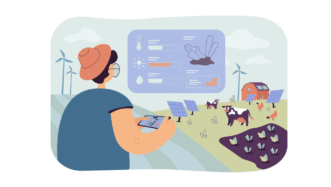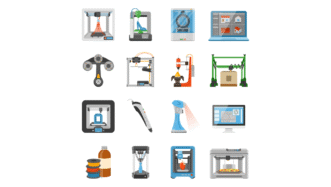LESSON OVERVIEW
The main objectives of this lesson are to:
- discuss inventions and their influence on people’s lives and the world;
- practise conditional structures;
- watch parts of two videos on relevant inventions.
Students discuss the impact of inventions with this lesson. They watch two parts of a videos (4.5 minutes in total) on important inventions (e.g. plumbing, printing press) and on groundbreaking failures that shaped the world. Students also review conditional structures (second conditional, third conditional, mixed conditionals) and speculate about alternative outcomes and scenarios to technological advances (ChatGPT and electric cars).
CONDITIONAL STRUCTURES PRACTICE
This lesson starts with a warm-up. Students discuss inventions and their usefulness. After that, they rank inventions (e.g. refrigerator, compass, plumbing, etc.) from the least to most important. Students watch part of a video (to 02:35) and check their ideas. Then, they watch it again and match the beginning with the correct ending of sentences about inventions. Following that, students look again at the sentences and practise conditional structures (including mixed conditionals). They match the sentences with conditional forms and their uses. Afterwards, students complete statements about other inventions (e.g. penicillin, engine, telephone, etc.) using verbs in the correct form.
VIDEO AND DISCUSSION
In this part of the lesson, students watch part of a second video (to 01:59) on failed inventions that changed the world. They correct statements about the video. Afterwards, students complete sentences based on the story from the video using their own ideas and conditional structures (e.g. If Douglas Engelbart hadn’t invented the computer mouse…). Then, they read stories about some famous inventions (wireless electricity transmission and the World Wide Web). Then, students practise conditional structures and answer questions on the inventions and their creators. Finally, in pairs, they create questions based on texts about ChatGPT and electric cars using different conditional structures. Then, students ask the questions to their partner and answer their questions.
HOMEWORK/REVISION
This lesson plan also includes an additional task that you can use as homework or revision. In the task, students rewrite sentences using conditional structures. They also add one more sentence using a conditional structure. The task is available in the teacher’s version of the worksheet. You can print it and hand it out to your students. It’s also included in the e-lesson plan.
WORKSHEETS
Subscribe to unlock these and many other Standalone lesson lesson plans with the Unlimited plan
Subscribe














This is just what I needed to encourage my exam students to actually use conditionals in their speech (and hopefully writing). The perfect topic with plenty of grammar practice. Love these advanced grammar lessons btw that are based on topics that come up in the exams.
Wondering if you’d ever consider publishing IELTS/FCE/CAE lessons plans down the line?
Thank you so much for your feedback! We’re delighted you found this lesson useful and engaging 🙂
Fantatic lesson, thank you. Very interesting and engaging.
Thank you so much for your feedback! We’re happy you liked the lesson 🙂
This lesson is really, really great. My students and I really enjoyed going through it. If I may, I will say that the matching grammar section is a bit overwhelming. I would explore a different way to explore the purpose and use of each conditional without so much writing and matching on one screen. I’ve found that my students got a bit overwhelmed with that section. I love this resource, thank you so much.
Thank you for your feedback! We’re happy your students enjoyed working with lesson 🙂 We’re trying to make sure out lessons are engaging, logical and have a smooth flow of activities, but it’s impossible to predict how they will work in each and every classroom. That is why we appreciate such feedback as yours to understand what in particular might cause a bit of misunderstanding. We believe that, should you decide to use this lesson again, you will find a way to make necessary adjustments 🙂
This is really a brilliant lesson as it covers Conditionals using a topic that is of great interest to today’s students. Many, many thanks !
Thank you so much for your feedback, Tina! Happy you liked the lesson 🙂